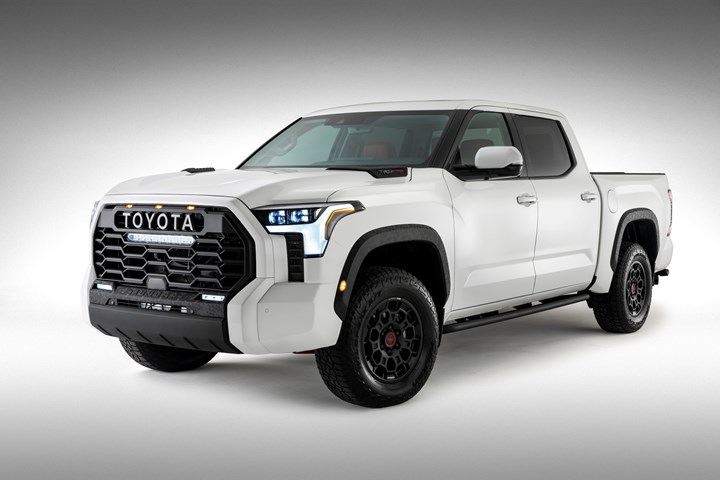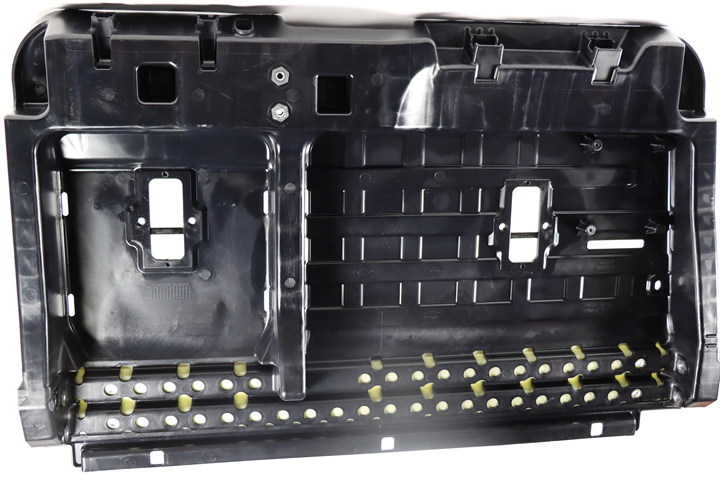Composite Seatback Design Wins Altair Enlighten Award
New seatback made from BASF’s Elastocoat PUR pultrusion system and overmolded with impact-modified Ultramid nylon 6
The prestigious was recently awarded to BASF, Tier 1 companies and , and for their achievements in vehicle weight savings with the composite seatback design on the 2022 Toyota Tundra truck. This is the second time in three years that BASF, L&L Products and Toyota have been recognized in the module lightweighting category.
The seat structure is the first interior application for L&L Products’ Continuous Composite Systems (CCS) technology that uses BASF’s polyurethane pultrusion system Elastocoat 74850. CCS is a fiber-reinforced composite carrier with highly engineered sealants and adhesives in a two-dimensional profile. Said Vik Bhatia, Toyota’s group manager for engineering design chassis, “Pultrusion composite technology allowed us to design a seat structure that was 20% lighter compared to the previous model and to meet our cost goals. BASF, L&L Products and Flex-N-Gate were great partners that help us reach our targets. “
In this application it was overmolded with BASF's Ultramid B3ZG7 CR impact-modified nylon 6 to create the 3D shape of the 60% seat back. Said L&L Products’ product engineering manager Hank Richardson, “With this partnership, we were able to eliminate an all-steel assembly which contained 60 stamped and welded parts and integrate into four composite parts which reduced assembly and scrap costs associated with the metal seat structure. This also allowed for greater functionality of the seating system.”

According to Kipp Grumm, BASF;s technology leader for thermoplastic composites, the company continues to show how pultrusion can deliver lightweight, cost-effective solutions as well as integrated functionality. “The unique design of the injection overmolded pultruded beam in the seat structure also passed all relevant crash test requirements and opens the door for more adoption of composites in automotive applications.”
Related Content
-
What's the Allowable Moisture Content in Nylons? It Depends: Part 2
Operating within guidelines from material suppliers can produce levels of polymer degradation. Get around it with better control over either the temperature of the melt or the barrel residence time.
-
Polymer Showdown — PC/ABS vs. PC/PBT — May the Best Material Win
First in a series, experts from plastics engineering consultancy The Madison Group will pit leading thermoplastics against each other to see how they differ in processing characteristics, chemical resistance, thermal and mechanical performance, and more.
-
Prices Up for All Volume Resins
First quarter was ending up with upward pricing, primarily due to higher feedstock costs and not supply/demand fundamentals.





